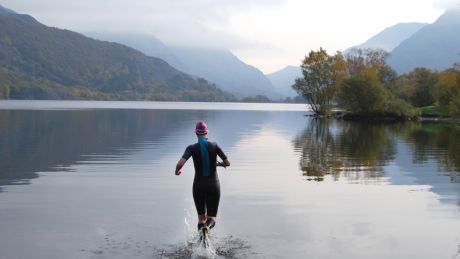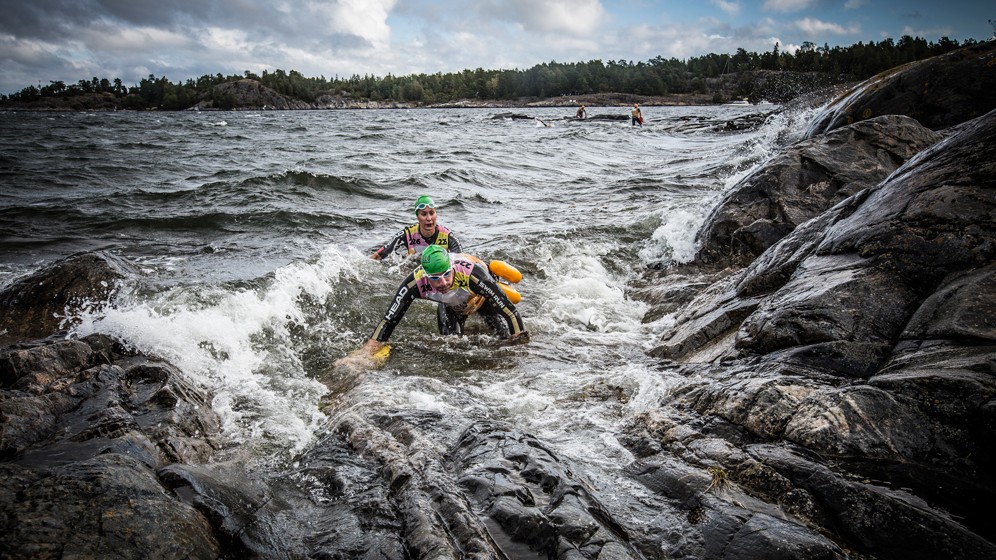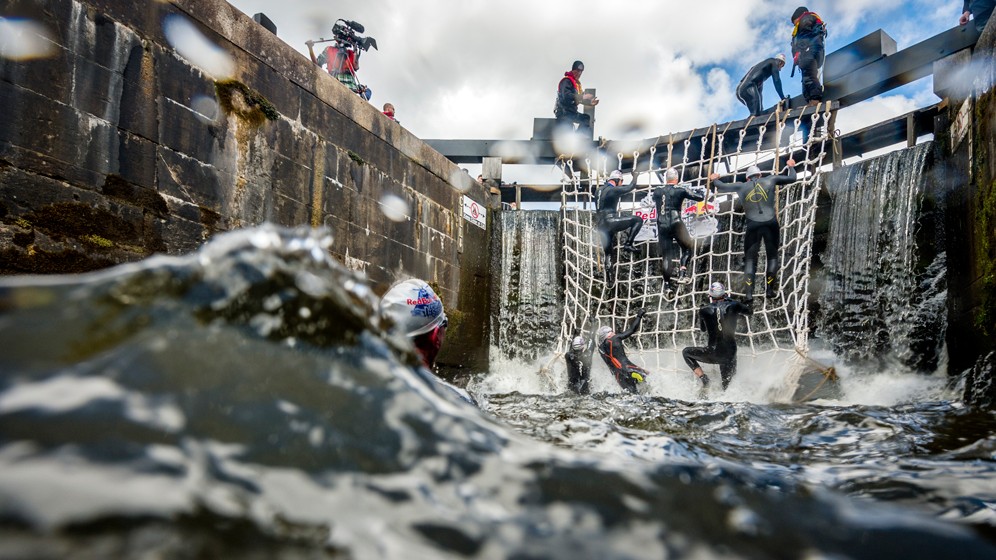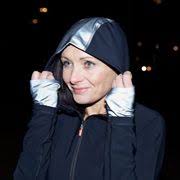Great Open-Water Swimming Challenges And Tips On Taking The Plunge
Plus, where beginners can test the open waters in the UK

Some people are only really happy swimming distances more frequently covered by shipping, so we spoke to the people who’ve conquered some of the greatest open-water swimming challenges to find out what it's like and why they do it.
We've also interviewed two open-water swimmers who've tackled the Thames and the Amazon, respectively. If that's inspired you, read on for tips for the beginner and four UK open-air water events to try.
Oceans Seven
The swimmers’ equivalent of the Seven Summits mountaineering challenge, Oceans Seven was devised in 2008 and involves crossing seven of the world’s toughest oceans: the North Channel between Ireland and Scotland, the Cook Strait in New Zealand, the Molokai Channel in Hawaii, the English Channel, the Catalina Channel in California, the Tsugaru Strait in Japan and the Strait of Gibraltar. Adam Walker was the first Brit to conquer this ultimate swimming challenge, one of only six people to do so. adamwalkeroceans7.co.uk
Err, why?
I swam on and off as a kid, then in 2006 I watched a movie on a plane about swimming the Channel and thought, “I wonder if I can do that?” I jumped in a pool and started training. The English Channel was my goal, but as soon as I’d done it I wanted to do more. It turns out that swimming the Channel I actually had a ruptured bicep tendon. I had two operations and invented a new swimming stroke using the hips, which generates more power and takes pressure off the shoulder, and I then swam the Gibraltar Straits, becoming the first Brit to swim it both ways. Around that time the Oceans Seven Challenge was devised, so that became my goal.
How do you train for something like that?
I was a kettle and toaster salesman at the time. In the winter I’d do 4-5km of speed work in the pool and at the weekend I’d do 10-14km swims. As it got warmer I’d be swimming up to six hours outside. I’d usually do one or two sessions in the gym a week too, working on muscular endurance. It’s a lot of time when you’re working so I was constantly knackered.
Which was the toughest swim?
It’s joint between Hawaii and Japan. In Hawaii I got stung by a Portuguese man o’war. I had to pull its tentacles off my stomach, I vomited up a lot of the poison but my spine went numb for about an hour. Because of strong currents we got lost and I had to swim an extra 11 miles in agony. It took all the mental positivity I had to get through. Even now I’m in disbelief I made it.
My shoulder packed in during the Catalina Channel and I ended up swimming for six hours with one arm. When I got back I had a third operation and then with nine weeks training swam Japan. The Tsugaru Strait has the toughest currents in the world. I had four hours of massive swells and was constantly being sick, then for the next 11 and-a-half hours I had to do 30 minutes of sprinting and five minutes normal speed to get through the currents.
Get the Coach Newsletter
Sign up for workout ideas, training advice, reviews of the latest gear and more.
So why do you do it?
It’s the ultimate test of yourself. I love the challenge and being out with nature. In New Zealand a pod of dolphins swam with me. After half an hour I looked down and there was a shark underneath and I realised the dolphins were protecting me, it was incredible. All those swims I’d been through were worth it, I’d do them all again just to experience that.
Man vs Ocean by Adam Walker (John Blake, £12.99), buy on Amazon
ÖTILLÖ SwimRun World Championships

A gruelling mix of running and swimming, ÖTILLÖ (island to island in Swedish) came about after a drunken bet when friends challenged each other to swim and run across 26 islands in the Stockholm archipelago. Ranked as one of the toughest endurance races in the world, competitors enter in pairs swimming 10km and running 65km of trails wearing wetsuits and running shoes for both. Adventurer Anna McNuff took part in a mixed pair with friend Tom Williams. Sweden, 5th September 2016, otilloswimrun.com
Why ÖTILLÖ?
We were on the hunt for something a bit different. We thought ÖTILLÖ sounded brilliant and the location looked stunning. If you’re going to put yourself through pain you might as well have nice scenery to look at.
How did you train?
We swam in Shepperton Lake in Middlesex. We’d get out and run laps then get back in and swim again. The biggest thing was learning how to swim in trainers and run in a wetsuit.
What was the toughest bit?
The first swim was really rough and congested and there was a helicopter above that was making the water even choppier. I just thought, “What have I done? I’m in way over my head”. But the swimmers spread out after that and it all calmed down.
So it was tough, but was it fun?
It’s the best one-day race I’ve ever done. The islands are beautiful. The atmosphere is incredible too. It’s got a really special, homely feel. SwimRun events are getting more popular so I hope it doesn’t change.
The Channel Swim
The 21-mile stretch of water between England and France has become one of the most iconic swimming challenges in the world, but don’t underestimate just how tough it is – the average solo crossing time is 13 hours, 30 minutes. With 34 crossings under his belt, Kevin Murphy, secretary of the Channel Swimming and Piloting Federation, holds the record for the most crossings by a male. cspf.co.uk
What was it about the Channel that attracted you?
As a kid I never won swimming races but I found I could swim further, if not faster, than others so I started doing long-distance open-water swimming. I did three miles, six miles, ten miles… but the English Channel is the big one, the thing long-distance swimmers all over the world measure themselves by. It’s cold, it can be rough and unpleasant, it tests you to the absolute limit, but unlike many oceans there’s nothing in there that’s going to eat you, so it’s become for swimmers like Everest is for climbers or Wembley for footballers.
When did you first swim the Channel?
My first escapade was a relay swim in 1965 when we set the then record for the fastest crossing. 1968 was my first solo one-way crossing and 1970 was my first two-way crossing. I’ve now done 28 single crossings and three doubles, 34 in all.
What is it about the Channel that kept you going back?
After I did my first one-way crossing there was a huge sense of anti-climax. I’d put so much effort into it all of a sudden it was over. The first reaction when you finish is, “Never again”, then 10 minutes later you start thinking about what you can do next. At that stage no Brit had done a two-way crossing so I did that. Then I thought no one’s ever done a three-way crossing. Everyone said it wasn’t possible, which was like a red rag to a bull.
Did you manage the three-way?
In 1975 I got to two-and-a-half crossings, swimming for 52 hours non-stop and eventually it was the support boat that gave up rather than me.
How do you train for the swim?
Ideally you need to train for at least two or three years. Swimmers will usually do three weekends swimming in Dover before their Channel attempt with a seven-hour swim one day and six hours the next.
What’s the toughest bit?
The toughest bit isn’t physical. You push your body way past its abilities so it becomes mental. This is not a competition for speed, this is you against it. You need to overcome the doubts and demons in your head. It would be so easy to touch the boat, which you’re not allowed to do if you want to continue, and give up.
And what’s the best?
Finishing. Knowing you’ve overcome all your own frailties and whatever nature can throw at you and you’ve conquered it.
Tempted to have one last go?
I’m 67 now. I’ve got an artificial shoulder and I had a heart attack in 2009, which makes it more problematic but I haven’t given up yet, the record for the oldest Channel swimmer is 73 after all.
Red Bull Neptune Steps

An aquatic assault course, Red Bull Neptune Steps claims to be the toughest open-water swimming race in the UK. Competitors sprint 420m upstream through Glasgow’s Maryhill Locks, clambering 18m over eight locks using cargo nets, ropes and ladders. Swimmer and kite surfer Mark Deans was crowned champion in the inaugural event in 2015. He’ll be defending his win at this year’s race. Glasgow, redbull.com
So Mark, why did you decide to take on Neptune Steps?
It’s only five minutes down the road from me and it sounded like a really unique race. It’s a bit like Tough Mudder for swimmers.
How did you train?
I train ten times a week anyway as I’m on the British and Scottish open-water swimming teams, so I hoped my swimming would see me through and I’d just deal with the obstacles when I came to them.
What was the toughest bit?
The cold, the water was only nine degrees as it was the end of March. The obstacles weren’t too bad because I managed to get a big enough lead that I wasn’t having to jostle for position to get over them but there was cold water crashing down in my face as I climbed.
Hmm, it doesn’t sound that enjoyable…
Oh it was. There was a really nice like-minded group of people and everyone was supporting each other, well, once they were out of the water, it’s a competition at the end of the day. It was really well organised as well. There were heats, semi-finals and finals so I ended up doing it three times. I’m going back for more this year.
Manhattan Island Marathon Swim [MIMS]
At 28.5 miles (46km) the MIMS is the world’s longest marathon swimming event. Swimmers must be invited to compete and need to have completed the English Channel swim in the two years prior to entry. Most swimmers will take between seven and nine hours to complete the course. Originally from Bridlington, swimming and triathlon coach Paul Newsome (swimsmooth.com) now lives in Perth, Australia. He won the MIMS in 2013. New York, 4th June 2016, nycswim.org
What was it about the MIMS that attracted you?
I’ve been swimming competitively since the age of seven. After a stint as a University Triathlon champion I moved to Australia as a swimming and triathlon coach and started getting into long-distance marathon swims. I swam the Channel in 2011, completed the 20km Rottnest Channel Swim in Australia, and the Manhattan Island Marathon Swim was another life-long goal.
How did you train for the race?
I have a young family and a full-time job so I needed to fit my training around that. My plan covered ten weeks and included work on technique, endurance swims of up to 20km and hard, 10km open-water swims.
What was the race itself like?
I’d been warned about dirty waters but, despite being the coldest MIMS on record – the water was 14 degrees rather than the usual 20, which is colder than the English Channel in summer season – it felt a lovely temperature and quite blue so I really enjoyed it. I was feeling really strong, but was amazed to find around two hours in that I was second. From then on I decided I wanted to win and I just put my head down and swam really hard.
What was the toughest bit?
I’d been warned that for many swimmers the huge George Washington Bridge can appear just an arm’s reach away for a very long time. I looked at it once and then didn’t look at it again until I could see its shadow overhead so that it couldn’t play with my mind. The last hour or so I had pains in my wrist and niggles in my shoulder, but I was never so tired I didn’t think I’d complete it.
How did you feel when you’d won?
Amazing. I wouldn’t let myself believe it until I touched the orange buoy where we’d started from. I was on cloud nine for weeks. Out of 42 that started only 11 officially finished the race and I was the first!
How To Start Open-Water Swimming
Unsure about taking the leap from pool to open water? Team GB age group triathlete, former GB pool and open-water swimmer, and swim coach, John Wood addresses some common fears.
How to cope with the cold
In colder temperatures you’ll probably want to wear a wetsuit, which keeps you warm and helps with buoyancy, too. But wetsuit or not, make sure you acclimatise to cold water slowly. Try not to rush to warm up when you enter the water, as this will spike your heart rate and breathing, and make you more likely to panic. Instead move slowly and gradually get the heart pumping.
How to see where you’re going
You’ll have marker buoys to guide you, but you’ll have to lift your head and look forwards to see them. This is known as sighting. Practice sighting during training to get used to the technique, then on race day aim to lift your head every six-10 strokes or so to make sure you’re still going in the right direction.
How to deal with other swimmers
Instead of heading for the back, where you may get stuck behind slower swimmers, try beginning on the outskirts of the pack. That way you catch the drafting effect (think cyclists riding behind each other to hide from the wind), but you have enough space to swim freely and feel comfortable.
How to get your wetsuit on and off
Lubricant products like Body Glide will help with getting the suit on and minimise chafing around the neck and armpits. Try to avoid using Vaseline as it can break down the wetsuit material.
For coaching enquiries visit tri-coaching.co.uk. You can follow John on Twitter.
Adam Walker’s Open-Water Swimming Tips
The things that typically worry people about swimming in open water are fear of the cold, being out of your depth and what dangerous marine life might be under you. My advice is to avoid dwelling on the negative side and focus on the goal. I push thoughts of danger out of my head and concentrate on what it will feel like once I’ve finished. Don’t even think the word ‘cold’. Instead consciously think positive thoughts so there’s no space for negative ones.
When you’re swimming a long distance you don’t think of it as a 17-hour swim, you think of it as lots of half-hour swims. Mentally breaking up the swim is useful if you’re struggling. Focus on your technique. Think, ‘I’m going to do 60 strokes and see how that goes’. Once you’re done, do another 60. That focus takes your mind away from everything else.
5 Achievable Open-Water Swimming Challenges
Not quite ready to swim seven oceans yet? Try these open-air water events for size.
Love SwimRun Llanberis, North Wales
In Wales’ first SwimRun event, competitors complete four lake swims totalling 3.5km and four runs covering 12.5km around Snowdonia. 17th June 2023, loveswimrun.co.uk
Henley Classic
Celebrating midsummer, this 2.1km swim in the Thames takes place at dawn on the stretch of water used for the Henley Royal Regatta. 29th July 2023, henleyswim.com
Great North Swim
Brought to you by the people behind the Great Run series, the Great North Swim is the largest open-water event in the UK. Take on a challenge that suits your level, choose from 250m, a half mile, one mile, two miles, 5k and 10k distances at Windemere in the Lake District. 9-11th June 2023, greatswim.org/great-north-swim/
South London Swimming Club Aquathon Series
Like a triathlon but without the cycle, swim 1km in London’s longest lido and then run 6.4km around Tooting Bec Common. 25nd May, 8th June, 22nd June, 6th July 2022, slsc.org.uk

Charlotte Thomas is a freelance journalist and health and fitness blogger at Lunges & Lycra.









